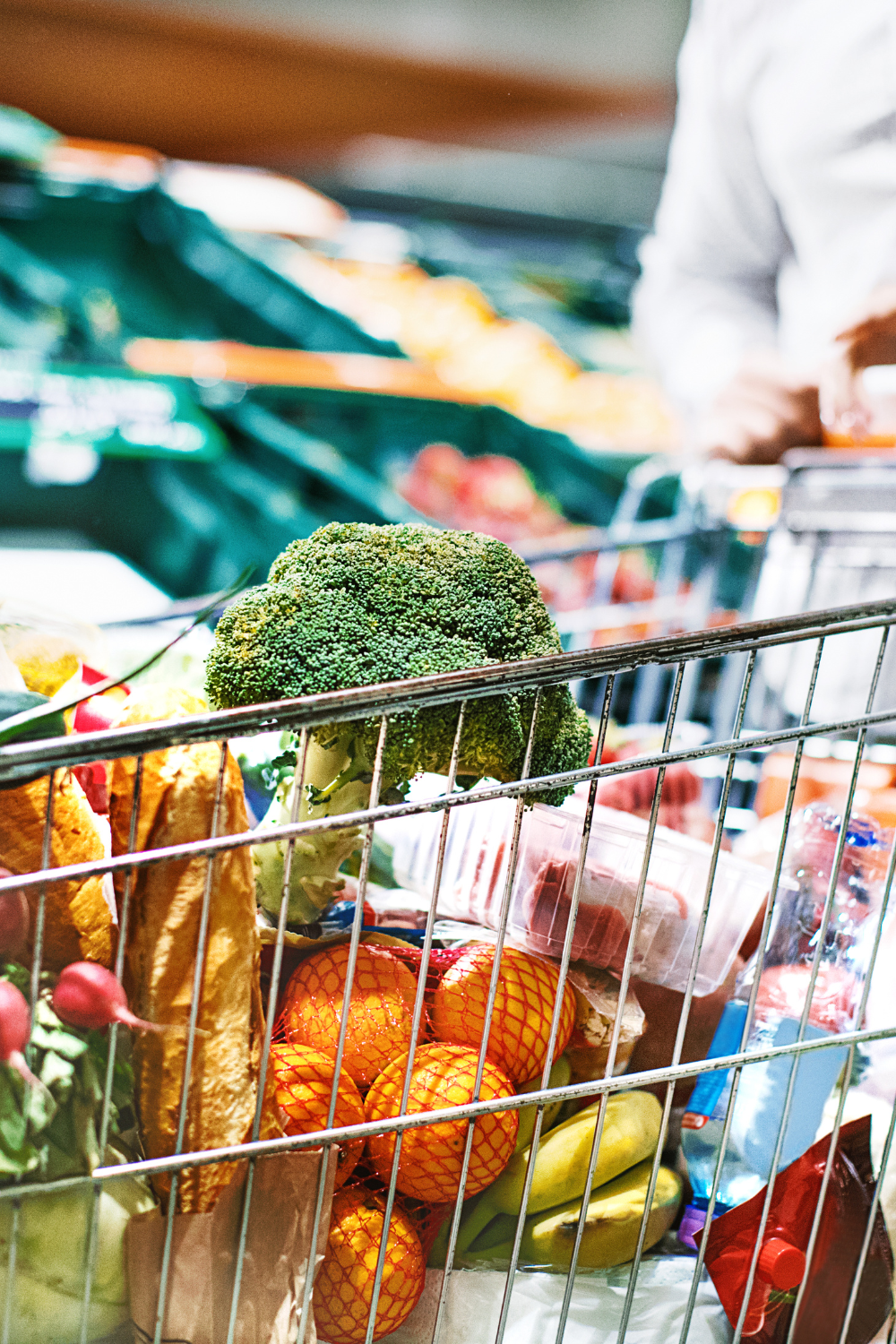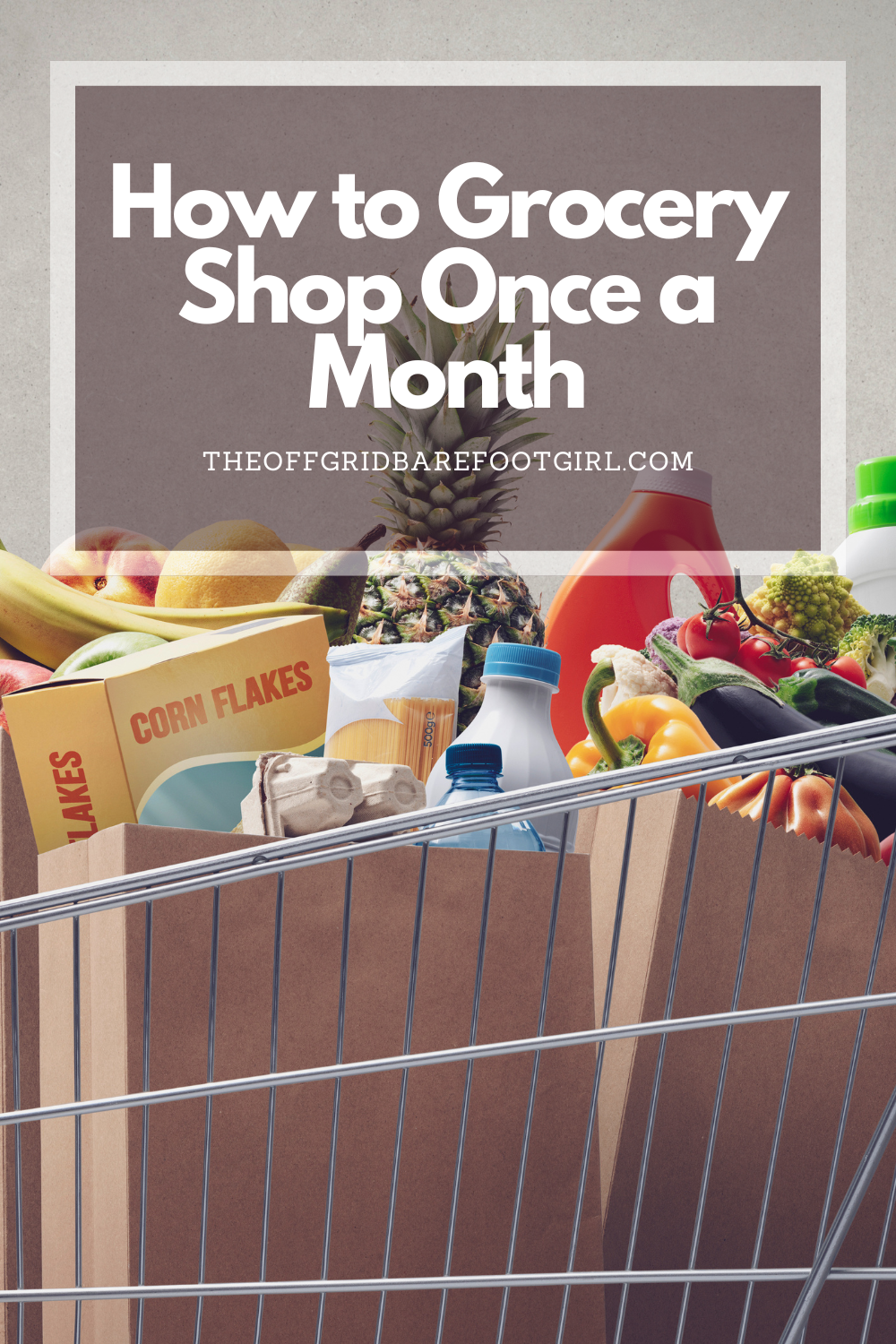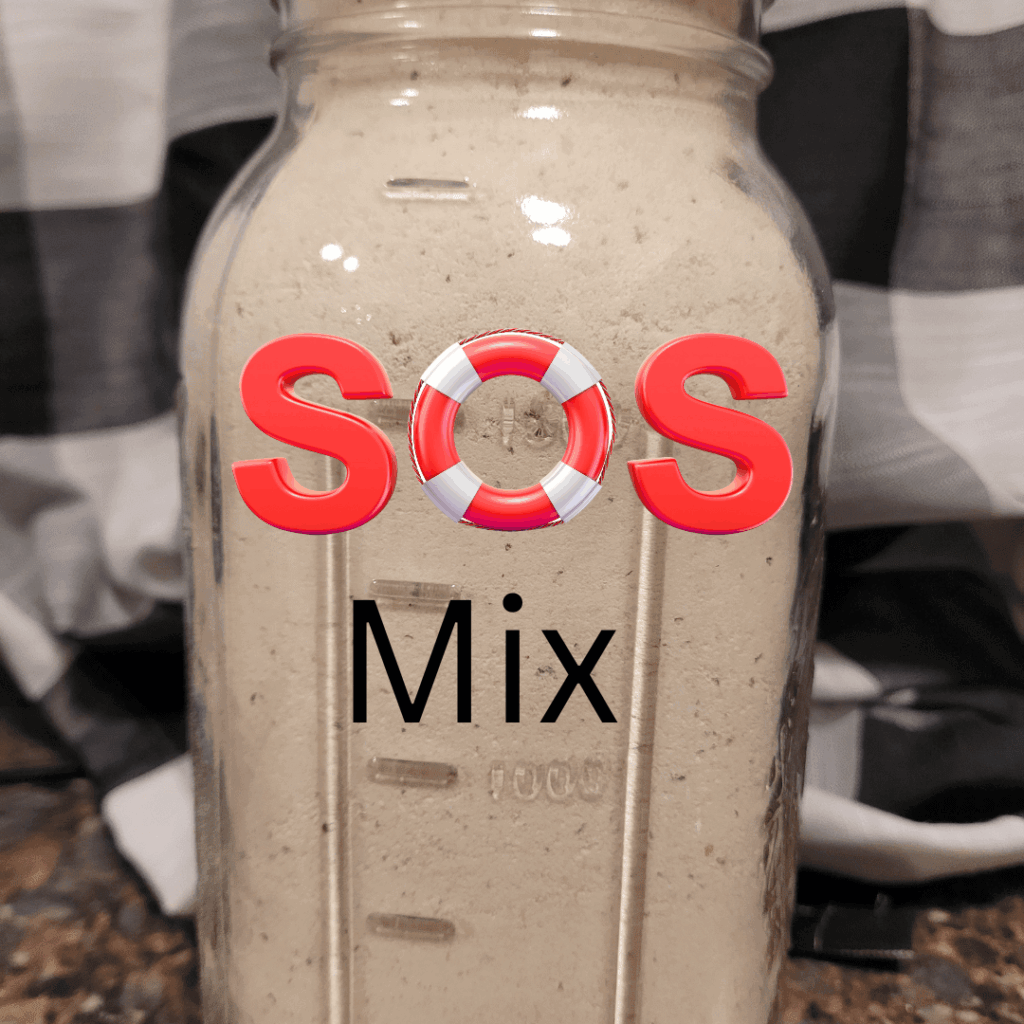Learn how to grocery shop once a month with this practical guide. Discover strategies for meal planning, pantry stocking, and budgeting so you can save time, reduce waste, and simplify your life. Perfect for busy families, homesteaders, and anyone looking to streamline their shopping routine.
Are you tired of making frequent trips to the grocery store and dealing with the hassle of unplanned purchases and long checkout lines? If so, it might be time to consider adopting a monthly grocery shopping routine. In this article, I will explore the benefits and strategies of grocery shopping once a month, helping you save time, money, and energy. By effectively planning, organizing, and prepping, you can streamline your shopping experience and ensure a well-stocked pantry for the entire month.
Shopping for a month at a time might seem daunting at first, but with the right planning, it can save you countless hours and reduce stress. By organizing your meals, creating a detailed shopping list, and properly storing your groceries, you can cut down on weekly trips to the store, minimize food waste, and keep your pantry well-stocked. In this guide, I’ll walk you through step-by-step strategies to make once-a-month grocery shopping simple, efficient, and even enjoyable.
This is a pinnable post. Tap or hover over any image in this post to pin to your Pinterest Boards.

Introduction to Monthly Grocery Shopping
Understanding the Concept of Monthly Grocery Shopping
Forget those weekly trips to the grocery store that leave you feeling frazzled and overwhelmed. Monthly grocery shopping is the new superhero in town, swooping in to save the day and make your life a whole lot easier. It’s all about planning ahead and stocking up on essentials throughout the month. So buckle up, because I am about to take you on a monthly grocery shopping adventure!
I want to help you understand the benefits and strategies of monthly grocery shopping; therefore, it’s time to dive into the planning and preparation process. Before embarking on your monthly grocery shopping journey, it’s important to evaluate your family’s needs. Take some time to consider their dietary preferences, any allergies or dietary restrictions, and the products you use regularly. This will help you create a comprehensive shopping list that covers all the bases.
Additionally, setting a realistic budget for your monthly grocery shopping is crucial. Knowing how much you can spend will help you make smart choices and avoid any unexpected financial surprises down the line.
Also, creating a shopping schedule is key to making the most out of your monthly grocery shopping adventure. Whether it’s the first Saturday of the month or the third Tuesday, having a fixed schedule will keep you organized and ensure you never run out of essentials. So get ready to plan, budget, and schedule your way to a well-stocked pantry for the entire month!
Benefits of Grocery Shopping Once a Month
Save Time and Energy
Who wants to spend precious hours every week pushing a cart down crowded grocery store aisles? By shopping once a month, you can reclaim that time and use it for more enjoyable activities. Plus, you’ll save energy, both physical and mental, by only having to tackle the grocery shopping beast once.
Reduce Impulse Purchases: Grocery Shop Once a Month
We’ve all fallen victim to the allure of those strategically placed snacks and enticing displays. But when you grocery shop once a month, you can say goodbye to those impulsive purchases haunting your pantry. With a clear shopping list and a mission to stick to it, you’ll resist temptation and keep your budget intact.
To further your savings, check out my other article on ways to save money on your grocery bill during inflation.
10 Ways to Save Money on Groceries During Inflation
Minimize Grocery Store Visits
Raise your hand if you love running errands and spending quality time in the fluorescent-lit aisles of the grocery store. That’s what I thought – not many of us do. By shopping once a month, you can minimize your trips to the store, meaning less time spent navigating parking lots and waiting in checkout lines. It’s a win-win!
To help you minimize your trips to the grocery store, learn how to stock up on your groceries by learning the best foods to stockpile for your pantry. Check out what foods to stockpile by visiting my other articles, which explains this in further detail.
- Best Foods to Stockpile for Survival Now: Prep Your Pantry
- Surviving the Unexpected: How to Plan a 6-Month Food Supply
- Surprising Ways to Use Powdered Milk in Your Recipes
- Thirsty for Survival: Expert Guide to Emergency Water Prep Tactics
- SHTF Prepper’s Pantry List: Apocalypse-Proof Your Food Supply Now!
- Practical Pantry Prepper: Essential Guide
- Survival Foods That Will Last Forever in Your Pantry
Planning and Preparing for Grocery Shopping Once a Month
Evaluating Your Family’s Needs
Before embarking on your monthly grocery shopping journey, take some time to evaluate your family’s needs. Consider their dietary preferences, any allergies or dietary restrictions, and the products you use regularly. This will help you create a comprehensive shopping list that covers all the bases.
Setting a Budget: Grocery Shop Once a Month
Just because you’re shopping once a month doesn’t mean you have to break the bank. Set a realistic budget for your monthly grocery shopping and stick to it. Knowing how much you can spend will help you make smart choices and avoid any unexpected financial surprises down the line.
Creating a Shopping Schedule
To make the most out of your monthly grocery shopping adventure, create a shopping schedule. Decide on a specific day each month when you’ll dedicate time to restocking your pantry. Whether it’s the first Saturday of the month or the third Tuesday, having a fixed schedule will keep you organized and ensure you never run out of essentials.
Creating a Comprehensive Monthly Shopping List

Taking Inventory of the Pantry and Fridge: Grocery Shop Once a Month
Before hitting the grocery store, take stock of what you already have in your pantry and fridge. This will prevent you from buying duplicates or forgetting to replenish essential items. By shopping from your own inventory, you’ll save money and reduce food waste.
Now, we’ve all been guilty of forgetting what’s lurking in the back corners of our kitchen cabinets. But trust me, spending a little time to organize and take stock of what we already have can not only save us money, but also prevent food waste. So here’s the deal: grab a notebook (or even use an app if you’re feeling techy) and jot down everything you’ve got stocked up. Start by checking the expiry dates – those are telltale signs of what needs to be used up first.
Then, group similar items together to easily see what you need more or less of. Not only will this help when planning your next grocery trip, but it also gives you a chance to get creative with using up those forgotten ingredients in delicious new recipes. Trust me, your wallet and taste buds will thank you!
Identifying Essential and Non-Essential Items
When creating your monthly shopping list, distinguish between essential and non-essential items. Essentials are the things you use regularly and can’t do without, while non-essentials are treats or specialty items. Prioritize stocking up on the essentials first, and then indulge in the non-essentials if your budget allows.
Also, when it comes to identifying essential and non-essential items, it’s important to consider our immediate needs and prioritize accordingly. Essential items are those that we require for our basic survival and well-being, such as food, water, shelter, and clothing. These are the bare necessities that should be given the highest priority in any situation. Non-essential items, on the other hand, are things that enhance our comfort or provide entertainment, but aren’t vital to our day-to-day functioning.
These might include luxury goods, electronics, or recreational activities. While it’s perfectly fine to indulge in non-essential items occasionally for enjoyment or leisure, it’s crucial not to lose sight of what truly matters in terms of sustenance and health. Being able to differentiate between essential and non-essential items helps us make informed choices about how we spend our time, money, and resources so that we can live a more purposeful and balanced life.
Incorporating Variety and Dietary Preferences
Don’t let your monthly grocery shopping routine become monotonous. Incorporate variety into your meals by exploring different recipes and ingredients. Consider everyone’s dietary preferences and try to include a mix of proteins, produce, grains, and snacks to keep things interesting. Your taste buds will thank you!
Creating an efficient shopping routine now that you have your shopping list ready and your budget set, its time to establish an efficient shopping routine. Start by organizing your list according to the layout of your preferred grocery store. This way, you can navigate the aisles more quickly and avoid backtracking.
Additionally, consider shopping during off-peak hours to avoid crowds and long checkout lines. And don’t forget to bring your reusable bags to minimize waste and contribute to a greener planet. By streamlining your shopping routine, you’ll save even more time and energy, making the once-a-month grocery shopping experience even more beneficial.
Efficiently Organize Your Pantry and Storage Space: Grocery Shop Once a Month

Optimizing Storage Containers and Labels
When it comes to organizing your pantry, the right storage containers can make all the difference. Invest in a variety of containers that are both functional and visually pleasing. Clear, airtight containers can help keep ingredients fresh and allow you to easily see what’s inside. Don’t forget to label your containers, especially if you’re prone to forgetting what you bought (we’ve all been there). Trust me, mistaking salt for sugar in your morning coffee is not a pleasant surprise.
Categorize and Arrange Your Items: Grocery Shop Once a Month
Categorize your pantry items to make it easier to find what you need. Group similar items together, such as canned goods, baking essentials, and snacks. Consider arranging items by frequency of use, putting the things you reach for most often within easy reach. And hey, if you want to flex your organizational skills, go ahead and alphabetize your spices.
Implementing the First-In, First-Out Method
Nobody wants to find a jar of pickles from 1998 lurking in the depths of their pantry. To prevent food waste, it’s important to implement the first-in, first-out (FIFO) method. Simply put, use older items before newer ones. When you restock your pantry, make sure to place new items behind older ones, so you’re always using up what you bought first. It’s like playing Tetris with your groceries, but with fewer stress-induced tears.
Strategies for Bulk Shopping and Utilizing Discounts
Identifying Bulk-Friendly Items: Grocery Shop Once a Month
Buying in bulk is a great way to save money and reduce packaging waste. Look for items that have a longer shelf life and won’t spoil quickly, like grains, pasta, canned goods, and cleaning supplies. Just remember, buying 100 rolls of toilet paper might seem like a good idea at the moment, but finding a place to store them might be a different story.
When it comes to identifying bulk-friendly items, there are a few key factors to consider. First and foremost, the item should be durable and not easily damaged during transportation or storage. This is especially important if you’re planning to purchase items in large quantities. Additionally, bulky items can take up a lot of space, so it’s helpful if they are lightweight or stackable to maximize storage efficiency. Another consideration is the market demand for the item – purchasing large quantities of products that aren’t popular may result in slow sales or excess inventory.
Price also plays a crucial role when identifying bulk-friendly items, as you need to ensure that buying in bulk actually saves you money compared to purchasing individual units. Lastly, it’s advisable to research any potential restrictions or regulations related to selling certain items in bulk, as this could affect your business model. By keeping these aspects in mind, you can successfully identify bulk-friendly items that offer convenience and profitability for your business.
Comparing Prices and Seeking Discounts
Before you fill your cart, take a moment to compare prices. Check out different stores or online retailers to see where you can find the best deals. Don’t be afraid to use your smartphone and search for coupons or discounts while you’re shopping. Saving money is like finding a hidden treasure, except instead of gold, it’s a coupon for 20% off your favorite cereal.
When it comes to comparing prices and seeking discounts, it’s no secret that everyone loves a good bargain. Whether you’re shopping for groceries, clothing, or even electronics, keeping an eye on price tags is essential in order to make the most of your budget. The easiest way to compare prices is by utilizing online platforms and apps that are specifically designed for this purpose. These tools allow you to quickly scan multiple retailers and find the best deal within seconds.
Additionally, staying up-to-date with discount codes and promotions can lead to substantial savings. Many retailers offer exclusive discounts through their newsletters or loyalty programs, so signing up for these can be worthwhile. Furthermore, being aware of seasonal sales events such as Black Friday or Cyber Monday can also give you an edge in finding unbeatable discounted deals. So, whether you’re searching for everyday items or big-ticket purchases, taking the time to compare prices and seek out discounts allows you to save money while still getting what you need.
Joining Loyalty Programs and Using Coupons
If you find yourself frequenting a particular store, consider joining their loyalty program. Not only can you earn points or rewards, but you might also gain access to exclusive discounts or coupons. And don’t be embarrassed to use coupons! It’s like getting paid to solve a puzzle at the checkout counter. Plus, who doesn’t love feeling like they’ve outsmarted the system?
Meal Planning and Prepping Grocery Shopping Once for a Month
Creating a Monthly Meal Plan: Grocery Shop Once a Month
Meal planning is the backbone of successful once-a-month grocery shopping. Take some time to plan out your meals for the entire month. Consider your family’s favorite recipes, dietary restrictions, and any special occasions coming up. This way, you’ll know exactly what ingredients you need to buy and can avoid the dreaded “What’s for dinner?” panic.
Batch Cooking and Freezing Meals
Embrace your inner chef and set aside a day for batch cooking. Prepare larger quantities of meals and freeze individual portions for later. This not only saves time and effort during the month, but it also helps prevent food waste. Plus, having a freezer stocked with ready-made meals feels like winning the lottery when you come home exhausted and can’t bear the thought of chopping a single onion.
Incorporating Fresh Produce Throughout the Month
While you’re focusing on long-lasting pantry items, don’t forget to incorporate fresh produce into your monthly meal plan. Plan meals that use perishable ingredients earlier in the month and opt for heartier produce like root vegetables towards the end. And don’t worry, if you forget to eat your greens, you can always hide them in a smoothie or sneak them into a sauce. Your secret’s safe with me!
Tips for Maintaining Freshness and Avoiding Waste
Storing Fruits and Vegetables Properly: Grocery shop once a month
To keep your fruits and veggies fresh for as long as possible, make sure you store them properly. Some items, like apples and bananas, emit ethylene gas, which can cause other produce to ripen faster. Keep these separate from items that are sensitive to ethylene, like leafy greens or berries.
Using Preservation Techniques for Meats
If you’re stocking up on meat, consider different preservation techniques to extend its shelf life. Freezing meat in individual portions or marinating it before freezing can help maintain its quality. And always make sure to properly label and date your frozen meat.
Monitoring Expiration Dates and Rotating Stock
Last, but not least, keep an eye on expiration dates and regularly rotate your stock. When you unpack your groceries, place newer items at the back and move older ones to the front. This way, you’ll be more likely to use up items before they expire and avoid the heartache of throwing out perfectly good food. Announcing “And here’s one I prepared earlier!” is optional, but highly recommended.
Conclusion
Transitioning to a monthly grocery shopping routine can be a game-changer for your household. By taking the time to plan, create a comprehensive shopping list, and organize your pantry, you can save valuable time and money while ensuring your family’s needs are met throughout the month. Additionally, implementing strategies such as bulk shopping, meal planning, and proper storage techniques will help maintain freshness and reduce waste. So, why not give monthly grocery shopping a try and experience the convenience and efficiency it brings to your life?
Now that you’re armed with the knowledge and a shopping list, it’s time to embrace the wonders of monthly grocery shopping. So bid farewell to those weekly grocery store visits and welcome a more organized and stress-free approach to stocking up on food. Happy shopping!

Frequently Asked Questions
1. Is it possible to buy fresh produce for an entire month?
Yes, it is possible to buy fresh produce that can last for a month. By selecting sturdy fruits and vegetables, storing them properly, and incorporating them strategically into your meal plan, you can ensure they stay fresh and enjoyable throughout the month.
2. How do I avoid the temptation of impulse purchases during monthly grocery shopping?
To avoid impulse purchases, it’s important to create a detailed shopping list and stick to it. By planning your meals in advance and only buying the items you truly need, you can resist the temptation of unnecessary purchases. Additionally, try to avoid shopping on an empty stomach, as hunger can often lead to impulse buying.
3. Will monthly grocery shopping save me money?
Yes, monthly grocery shopping can save you money in several ways. By buying in bulk and taking advantage of discounts and sales, you can often get better prices on items. Additionally, by reducing the number of trips to the store, you minimize the chances of making unplanned purchases. Lastly, having a well-planned shopping list and meal plan helps prevent waste, saving you money in the long run.
4. Can I still buy perishable items, like milk and bread, for a whole month?
While it may be challenging to buy extremely perishable items, such as milk and bread, for an entire month, you can adopt strategies to extend their shelf life. Consider buying long-lasting alternatives like powdered milk or frozen bread loaves to use as needed. Additionally, you can choose to make smaller, more frequent trips to the store specifically for these perishable items, while still maintaining the monthly shopping routine for non-perishable goods.
Summary
I hope I have inspired you to stockpile your pantry for your survival needs.
If you were encouraged by this post, I invite you to check out my FREE Printables Page for fun free printables, planners, and charts.
ENTER MY FREE Printables Page HERE
Here are some more of my canning inspiration posts to check out!
How to Make and Can Fall Spiced Quince Chutney
Quince: How to Can Quince
Carrot Cake Butter: How to Make and Can Carrot Cake Butter
Peach Pie Filling: How to Make and Can Peach Pie Filling
Pear Pie Filling: How to Make and Can Pear Pie Filling
The Best Winter Pantry Staples to Stockpile Now!
More Recipes!
Grapes: How to Make and Can Grape Jam
Apple Cider: How to Make Homemade Apple Cider Vinegar
How to Make and Can Cherry Plum Jam
How to Make and Can Apple Butter In Crockpot
Stockpiling Condiments for Survival: Learn How I Do It!
How to Make and Can Vegetable Pot Pie Filling
Easy Canning Applesauce Recipes to Stalk Your Pantry!
How to Make Peach Jalapeno Jam
Cherries: How to Make Cherry Pie Filling
Cherries: How to Make Cherry Syrup
Salsa: How to Make and Can Cherry Salsa
Peaches: How to Make and Can Peach Salsa
Canning Supplies You Need Now for a Successful Canning Season!
How to Make and Can Balsamic Onion Jam
Cranberry Sauce: How to Make and Can Old Fashioned Cranberry Sauce
How to Make and Can Cranberry Merry Jam
How to Make and Can Strawberry Shortcake Jam
Cherry Jam: How to Make and Can Cherry Pie Jam
Carrot Cake Jam: How to Make and Can Carrot Cake Jam
Quince Jam: How to Can a Year’s Supply of Quince Jam
Root Beer Float Jelly: How to Make and Can Root Beer Float Jelly
Blessings,
The Off Grid Barefoot Girl




